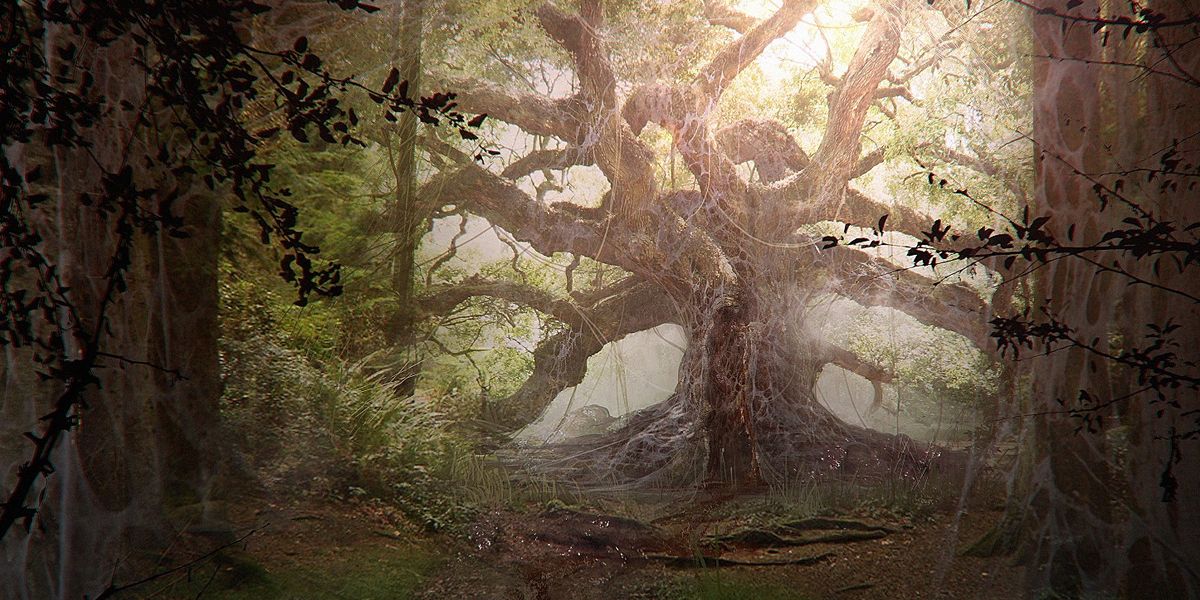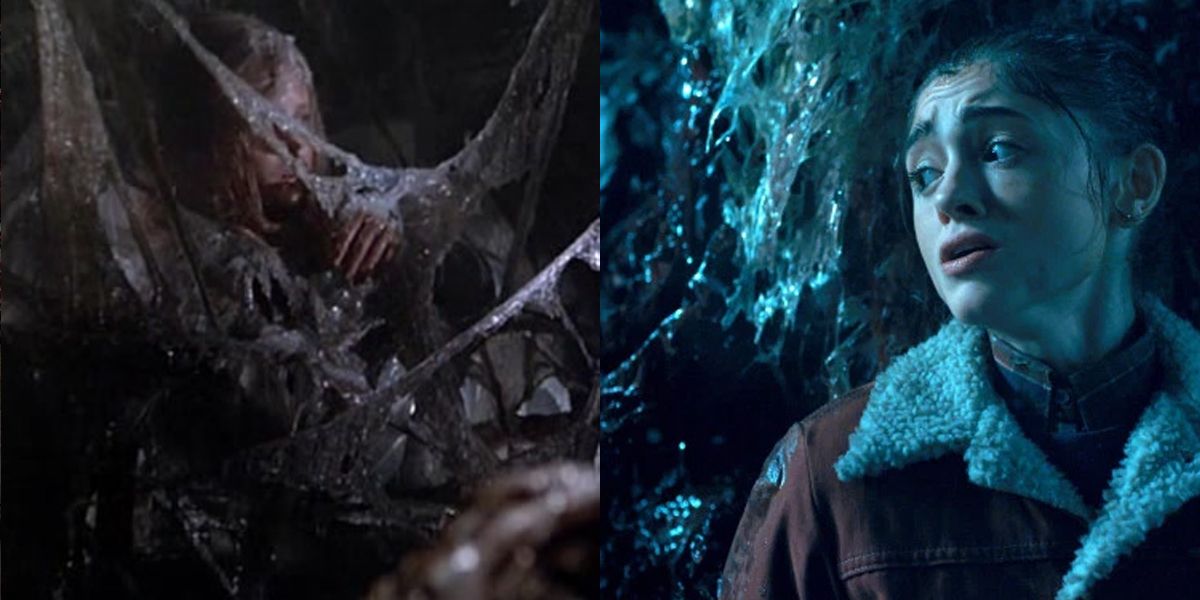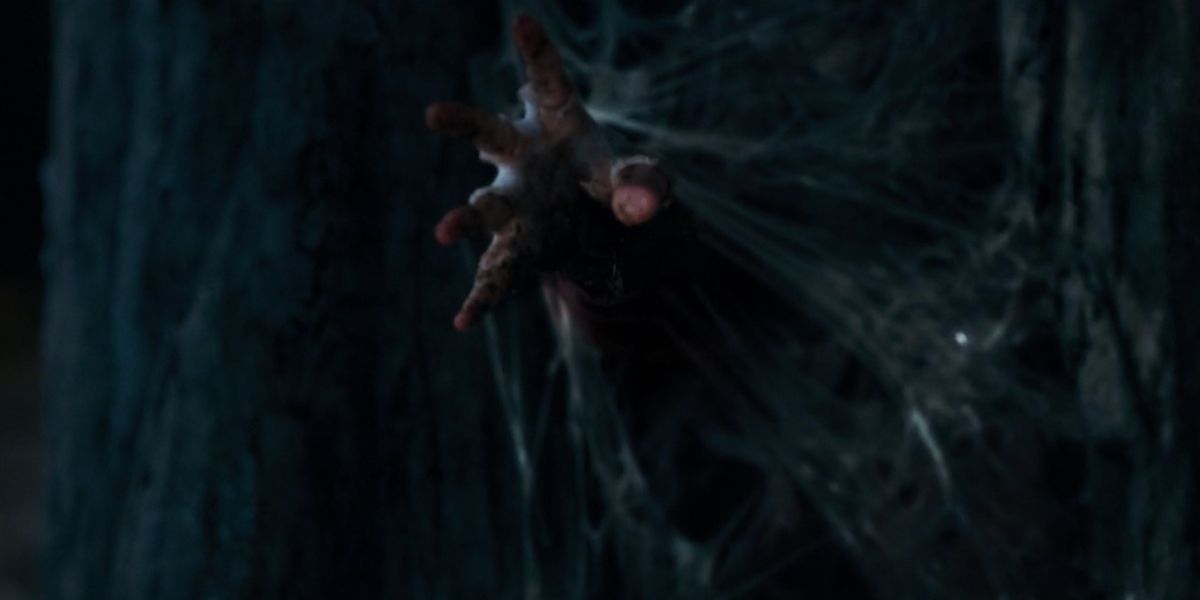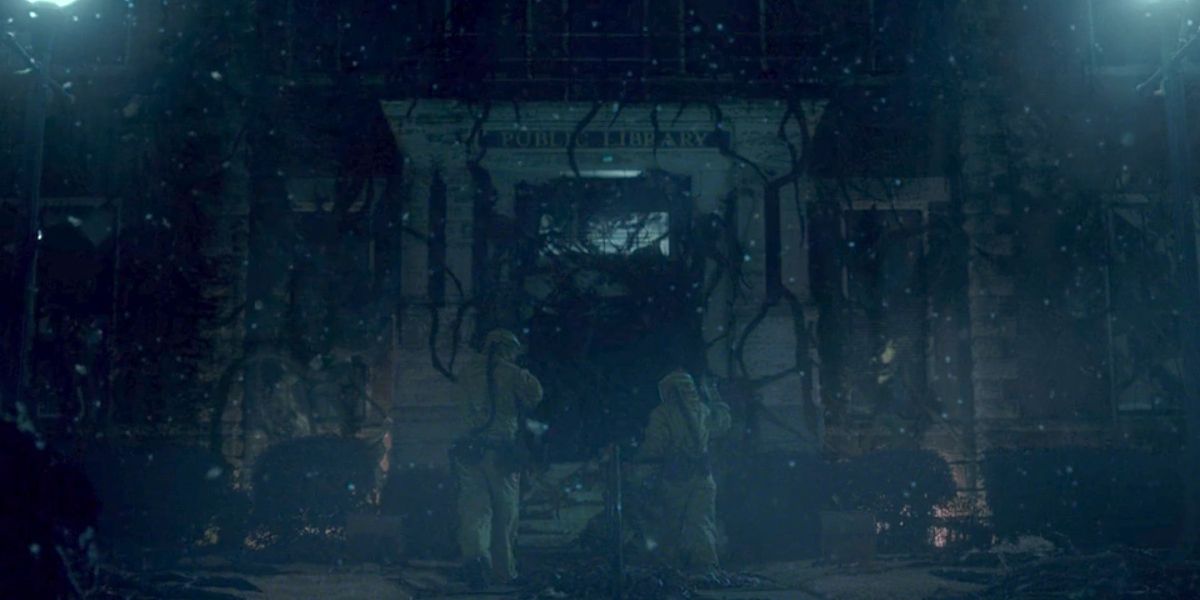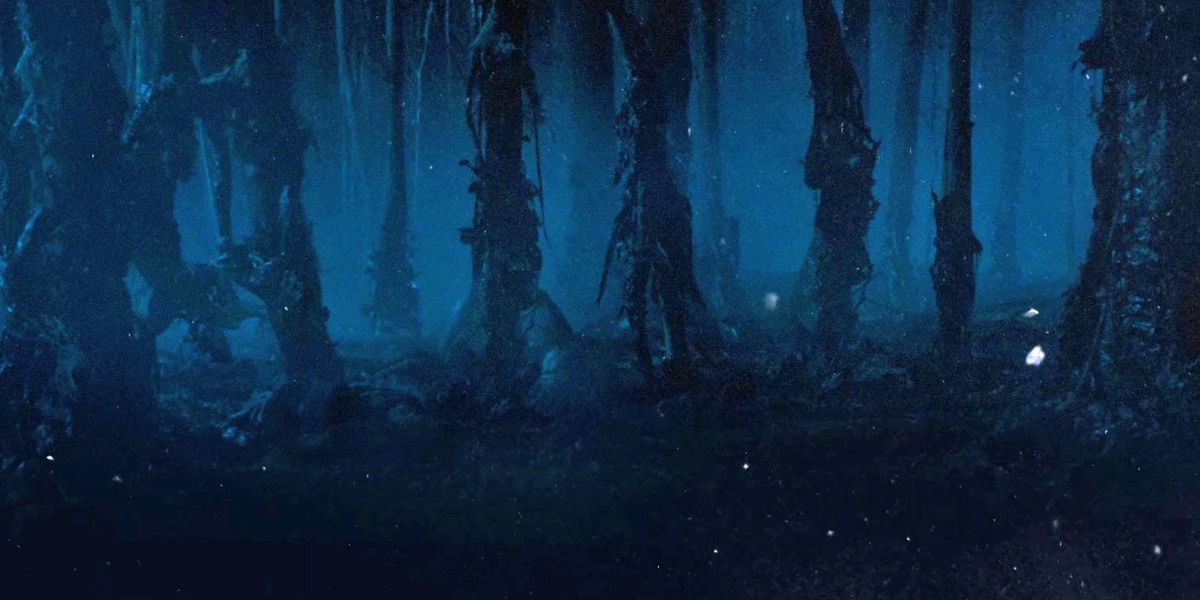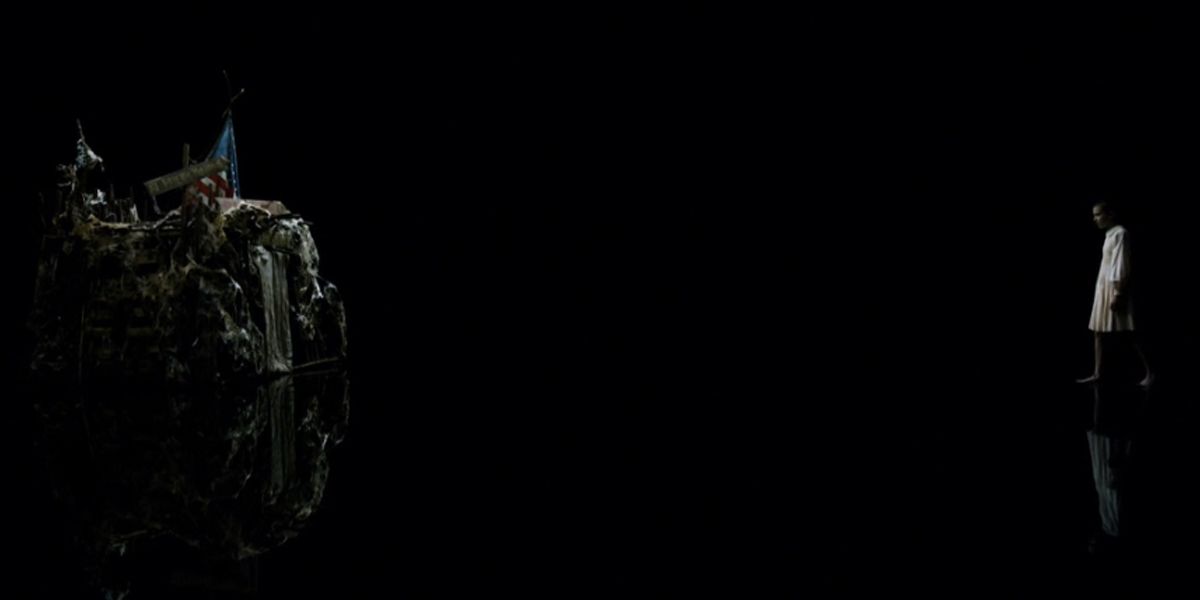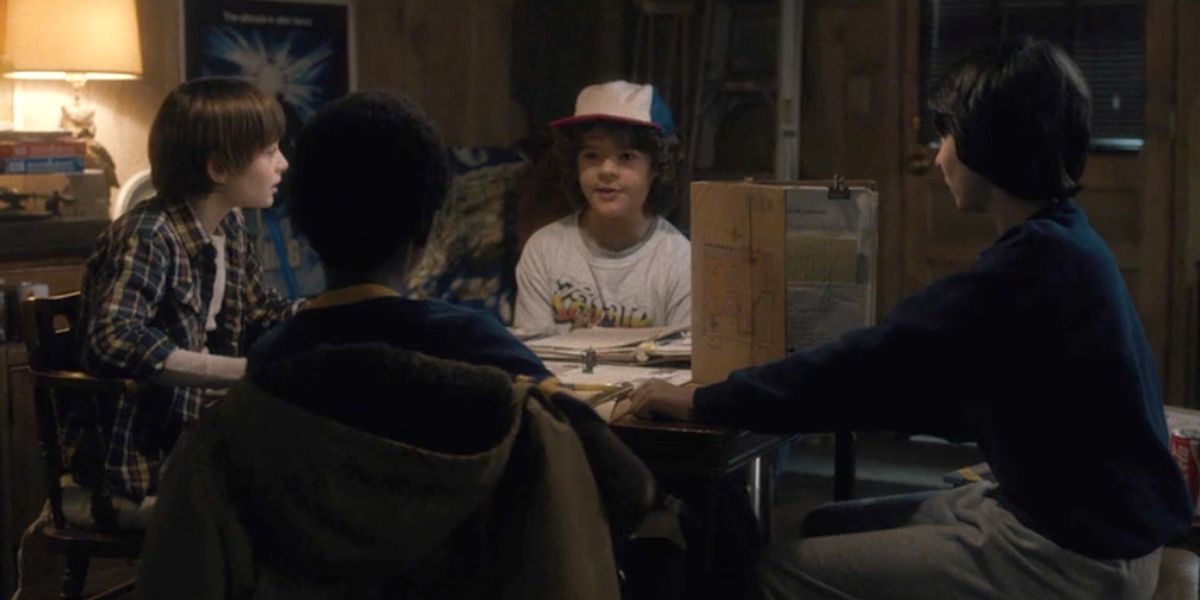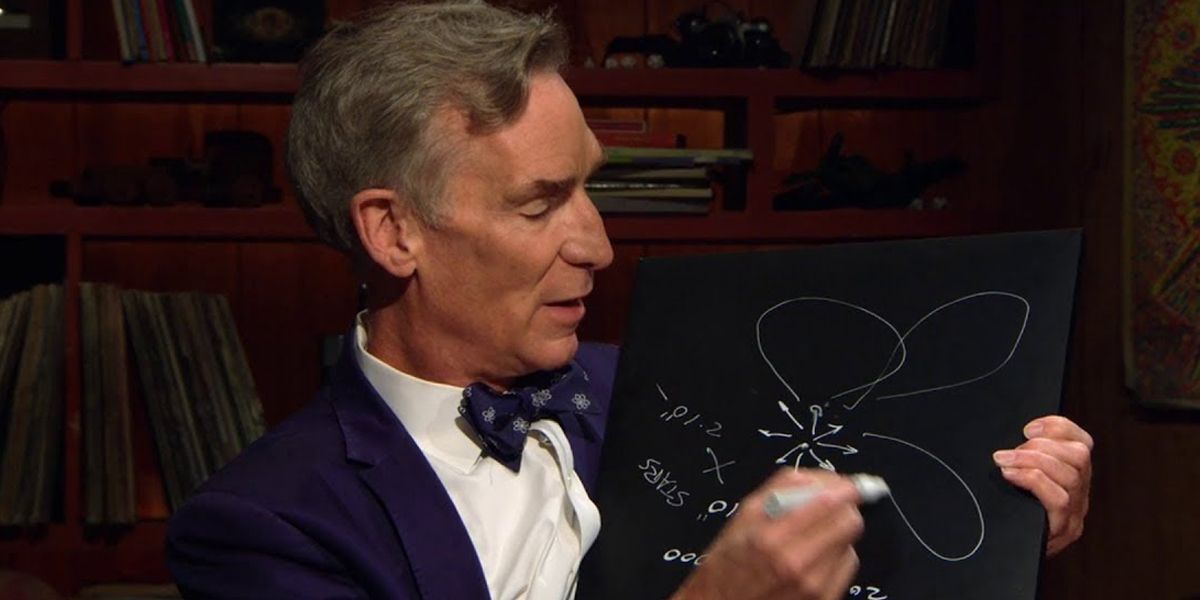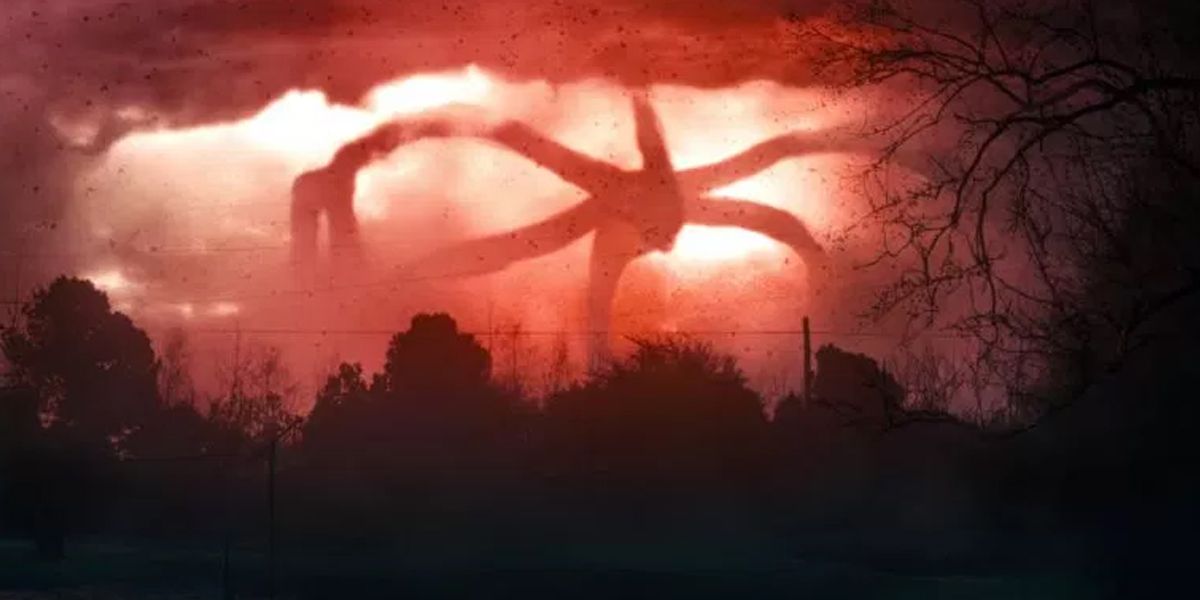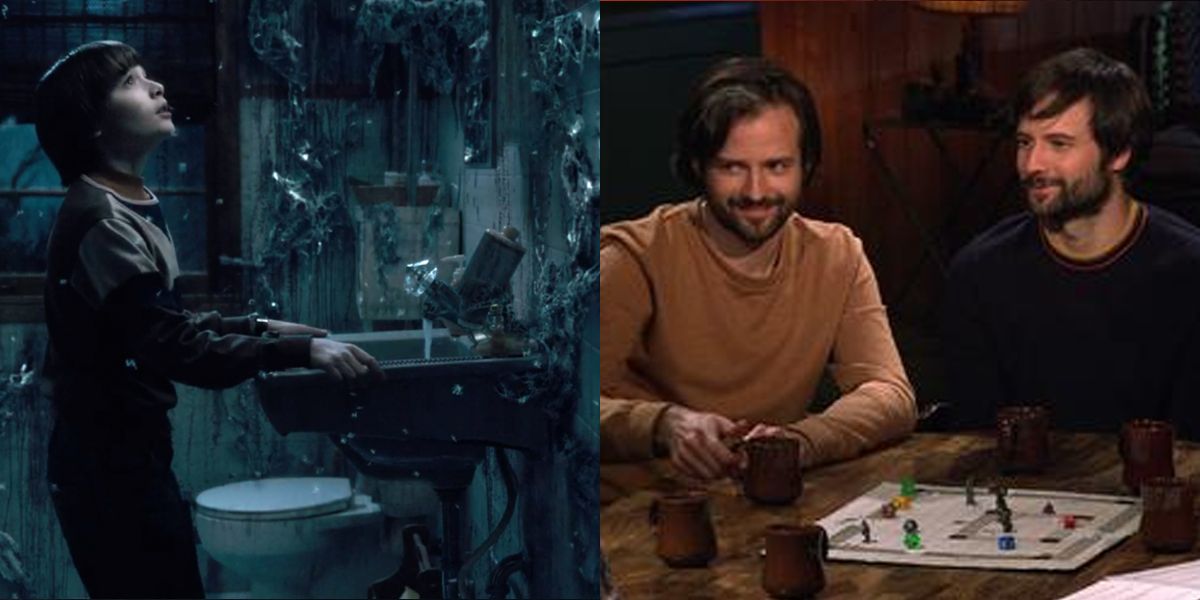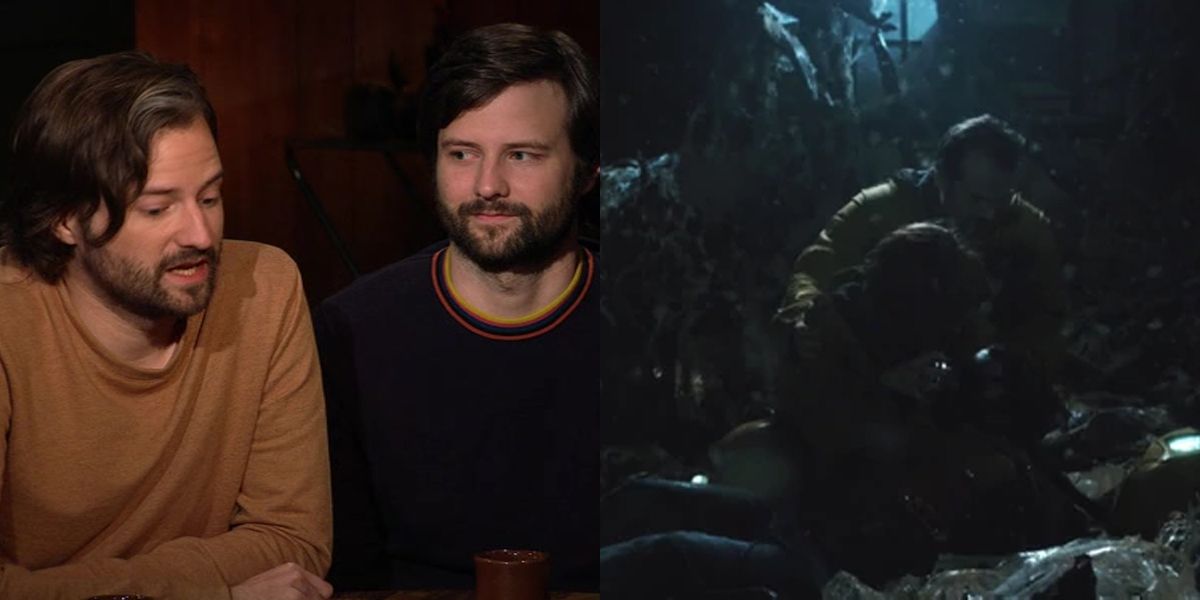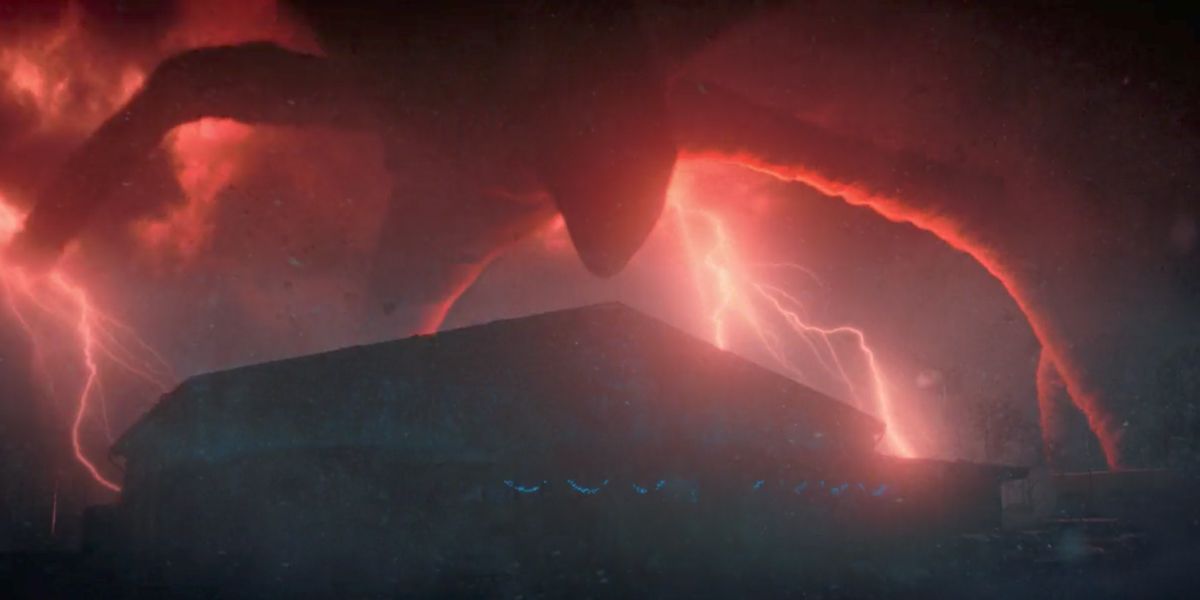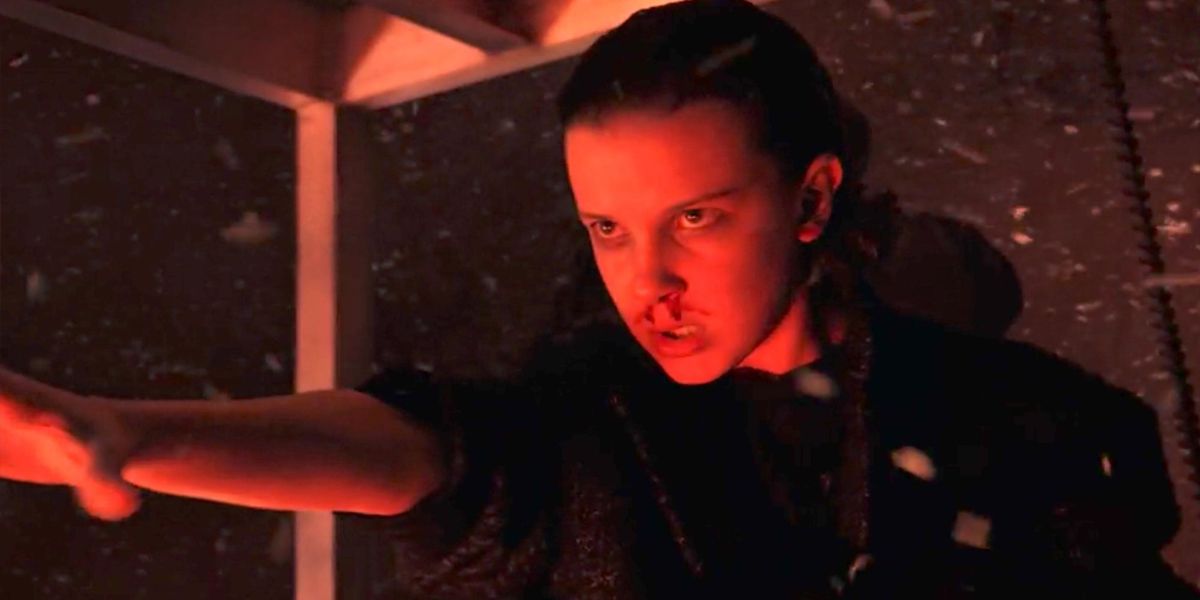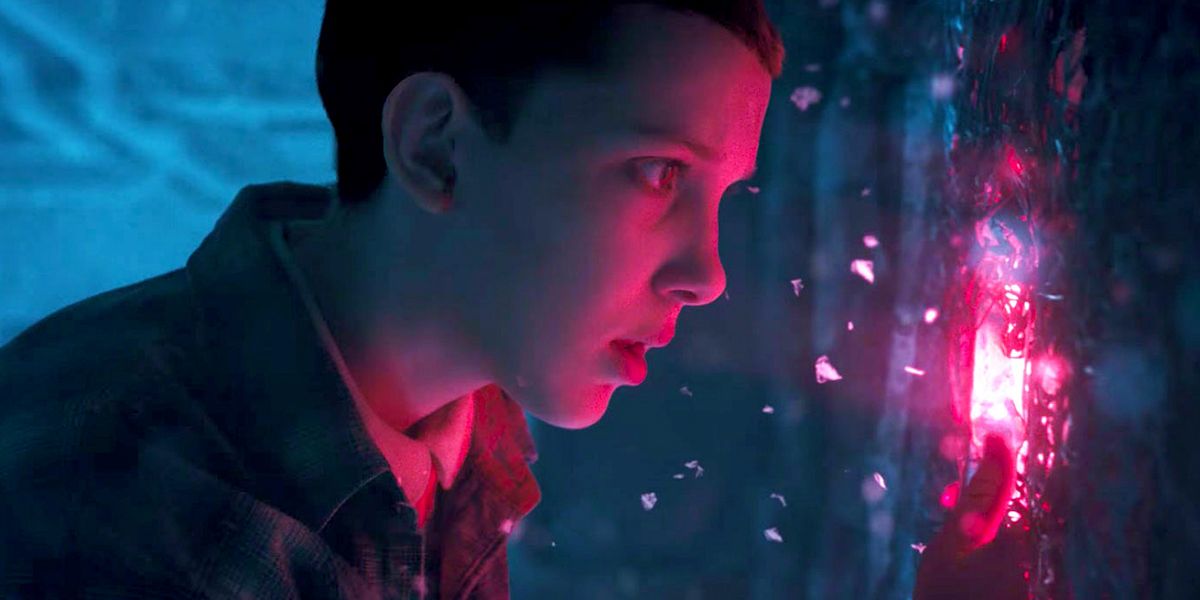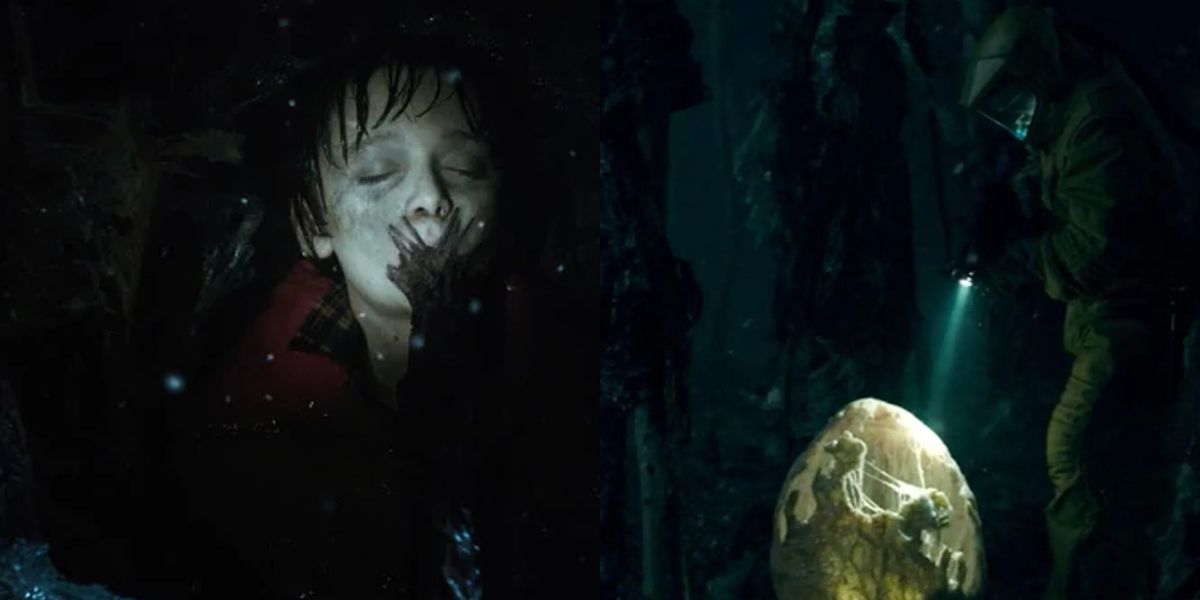One of the most crucial elements of any good fantasy or science fiction series is world building. For a franchise like Star Wars, you're never once allowed to doubt the fact that you're in a galaxy far, far away a long time ago. In Game of Thrones, Westeros and Essos are fully formed regions with countless societies, races, and noble houses.
For Stranger Things, there are two primary locations across both seasons. One of them is remarkably familiar, despite being located over thirty years in the past. Hawkins, Indiana is just like any other small town in America, bustling with life and warmth and secret drama hidden beneath the surface. However, it's the other main location that the series sells with amazing (and terrifying) attention to detail.
That, of course, is the mysterious realm known as the Upside Down. While we don't actually know a whole lot about it—since most of what we do know, after all, comes from the minds of middle school students—there are certain secrets we've uncovered over time that start to paint a clearer picture of the murky world.
Here are the 15 Things You Never Knew About Stranger Things' Upside Down.
It originally had both day and night
Part of what makes the Upside Down such an eerie place is the persistent darkness that shrouds it. After all, there's a reason that Stranger Things 2's first trailer used Vincent Price's iconic "Darkness falls across the land" monologue from Michael Jackson's Thriller.
However, in earlier concept art renderings, the Upside Down was almost unrecognizable, all due to one notable difference: the presence of sunlight.
According to the artists of Aaron Sims Creative, who produced the series' early concept art, "At the time, we didn’t necessarily know if day and night existed in the Upside-Down. We actually considered the possibility of a time change when going between the two worlds -- e.g. Nancy entering the rift when it was nighttime in our world, and coming out into the Upside-Down in the day."
Ultimately, the idea was scrapped in favor of the more ominous and frightening Upside Down we all know today.
Influences included Alien and Silent Hill
Another part of what makes the Upside Down so unsettling is the fact that it's literally just our world, but inverted and covered with a viscous gooey substance. The goo seems to be everywhere and covers anything it touches, which adds to an already sky-high "ick" factor.
As artist Aaron Sims explains, the overall appearance of the Upside Down has storied pop cultural inspiration: "We did take some inspiration from Alien when taking a world that we thought of as familiar, and then placing a sort of membrane all over it. In the same way, when the Alien eggs would grow in certain areas, it would affect our world."
Additional sources of inspiration include the haunting video game series Silent Hill and the dystopian surrealist Polish artist Zdzislaw Beksinski.
It was meant to look like it was alive
It would have been pretty easy for Stranger Things to lean into the conventional science fiction locations afforded to it by its genre. The Upside Down could have been futuristic and minimalist, something straight out of a space adventure series. It also could have relied heavier on the horror genre, producing something far more ghoulish and bloody.
However, when it came to the portals connecting the Upside Down to the real world-- whether it be central one at the Hawkins Lab or some of the smaller ones in the woods-- the overall design evolved from "early designs [that] felt 'too sci-fi'" to something that instead "[felt] grounded, somewhat disgusting, like looking at the inside of a body. As opposed to a portal to a parallel universe, this felt like a membrane, like a physical organ."
The Upside Down may not only have a thing for drawing living beings into its traps, therefore: it very well may be living on its own somehow.
The spores may be caused by the Demogorgon
Even in the immense darkness of the Upside Down, one atypical feature is immediately apparent: the fact that the air is populated by freely falling snow-like spores. The series has yet to offer any sort of explanation for this source of pollution/pollination/whatever it may be classified as, and it's unclear as to whether it will ever be addressed.
However, once again, Aaron Sims Creative has a bit of an answer for curious fans everywhere, based on the guiding principle they used for designing the Upside Down: "We really used the particles in the air to represent the difference in the two worlds, rather than a specific relationship… There is some idea that if the creature existed in our world, the particles would exist here as well…but no word on the specific relationship."
It was mostly created with practical effects
Perhaps as a result of the desire to move away from designs that seemed to rely too heavily on conventions of science fiction, much of the layout of the Upside Down was created with wholly practical effects, rather than depending entirely on CGI and green screen. In order to create a world that seemed like it was living, they needed to have components that were tangible and animated.
According to Ross Duffer's explanation of the aesthetic of the Upside Down, "We wanted it to be like a dark shadow of our world. We knew it was something we could use practical things — we could build off of our sets and locations — it’s that mix of practical and visual effects. A lot of those vines and the growth we did build — a lot of them were moving and pulsing. When you do something like a full-on city street, visual effects has to take over at some point. And a lot of those practical effects were added as well. It was about, 'What would our world look like if this was an evil shadow of it?'"
Eleven may be the first person to have encountered it
In season 1, we get multiple glimpses of Hawkins Lab's cruel, torturous methods of training Eleven to cross dimensions and space in order to learn confidential information. However, during one of her sensory deprivation attempts, it isn't a government entity or foreign message that Eleven comes across, but rather, the Demogorgon itself.
It's in this expansive, black, void-like space that Eleven first encounters the Demogorgon and presumably the suggestion of the Upside Down with it. Further, she even comes into physical contact with the monster, perhaps establishing a physical link between the two.
Yet, while this is the first sign of the Upside Down's existence (or creation?) that we are given, we still have no real idea about what this jarring moment suggests. Did the Upside Down exist before this point in time? Did the Demogorgon? Or was Eleven's interference in the breach somehow responsible for their creation?
The Dungeons & Dragons comparison doesn't actually exist
Dungeons & Dragons is an integral part of the mythology of season 1. From the campaigns that are waged in the opening and closing minutes of the series, to the continued references to its many beasts and creatures, the fundamental nerdy pastime is practically its own character in Stranger Things' first eight episodes.
However, according to devoted fans of the tabletop roleplay game, one of the most noteworthy references the boys draw from the game doesn't actually exist. The Vale of Shadows, which Dustin in particular uses to explain the existence of the Upside Down as the boys (and Mr. Clarke) theorize about it, isn't actually part of the game.
Instead, it's a creation of the series, and perhaps even a creation of the characters', as Dungeon Masters within the game have the freedom to create new places and campaigns as they see fit.
Bill Nye says the Upside Down could prove the multiverse theory
As the resident trusted expert on all things TV science-related, it makes sense that Beyond Stranger Things would defer to Bill Nye the Science Guy to try and explain how the Upside Down could plausibly exist. The theory put forth by the show is that the Upside Down could verify the extremely complicated scientific theory of multiverses.
According to Nye's very brief explanation on the season 2 after show, the Upside Down's existence suggests that "perhaps there are these bubbles of universe, which we now are calling multiverses, also expanding somehow at the same time. And is it possible that there are areas like this where the multiverses intersect? So this is the Upside Down, and we are in the Rightside Up."
The Mind Flayer may be responsible for electrical interference
A crucial element of season 1 that instantly became a viral hit and iconic symbol of the series was the presence of flickering Christmas lights. The seasonal decorations acted as an unlikely source of communication between the real world and the Upside Down, allowing poor Will Byers to communicate with his mother Joyce whenever he was able.
However, in addition to the deliberate communication, other bizarre incidences of electrical interference occurred, such as phones short circuiting and burning out, outages of service, and lights flickering on and off and ringing in an eerie way.
According to visual effects producer Christina Graff, the newly revealed villainous Mind Flayer is to blame for all these bizarre signs: "Since we had all these electrical disturbances last year in season one, where the Christmas lights were blinking or any sort of electrical light is blinking, we knew there were going to be storms in season two. The Shadow Monster is somehow connected to all of that energy."
The Duffer Brothers have a 30 page guide to the Upside Down
Have you ever wondered just how much preparation goes into writing your favorite show? Do some plots feel like they're barely held together with a few shoddy pieces of string and some duct tape? Similarly, do others feel like they've been intricately woven together and planned out from the very beginning?
Thankfully, in the case of the Upside Down, we can report that the scenario falls into the latter category. According to the Duffer Brothers following season 1, a guide book to all things Upside Down is apparently something they have all planned out and on hand.
"We have a 30-page document that is pretty intricate in terms of what it all means, and where this monster actually came from, and why aren’t there more monsters — we have all this stuff that we just didn’t have time for, or we didn’t feel like we needed to get into in season one," he said.
Now if only we knew even 1/10 of the information in that document...
It was originally referred to as "The Nether"
It's a normal part of every writing process for characters' names or settings to change the further into production you go. Particularly with TV and film, names are usually required to be cleared for use, which can result in some hasty rewriters and dialogue changes.
For Stranger Things, however, an interesting discrepancy in naming occurred in the season 1 scripts. As the Duffer Brothers and Shawn Levy explain in Beyond Stranger Things, even though the characters all referred to the mysterious realm as the Upside Down in each of their scenes, the actual text of the script directions and stagings instead used the more ethereal, otherworldly, and even hellish title of "The Nether."
It's not clear what the source of this discrepancy in naming was, but as cool as "The Nether" may sound on paper, there's no denying that the Upside Down is a far catchier and more mysterious name.
A crazy season 3 theory suggests that it has a time-bending component
At the moment, we really know nothing about what season 3 holds. Season 2 ends with a sweet montage of all the younger characters taking part in the school's Snow Ball, with the Mind Flayer defeated and normal kid stuff back on the table. However, as the cliffhanger reveals, the Mind Flayer is looming in the Upside Down, lurking above the inverted school building and plotting its revenge.
As if that weren't already stressful enough, a truly surprising fan theory regarding the final image of the season suggests a time-bending twist no one could see coming. The theory claims that, at least in the inverted image of the Upside Down school, the vehicles parked outside of it are 1950s vintage style, rather than the 1980s style cars that sit outside of the real world school.
There's no telling if this is true, especially given how hard it is to see much of anything through the Upside Down's lighting. However, it makes you wonder: what if the Upsde Down has been around since Joyce and Hopper roamed the halls of the school?
Yes, the gate is really closed
While many things are left up in the air (or upside down in the air?) by the implications of Stranger Things 2's final shot, there is one thing that we can rest assured in knowing: the gate to the Upside Down in Hawkins Lab is really, truly closed for good.
In an interview with The Hollywood Reporter, Matt Duffer confirms that "Ultimately, I think it's a good thing for the town of Hawkins that the lab has been shut down. That chapter of the storyline, in terms of the rift and Hawkins lab, that's closed. I think that's actually a positive thing."
So it sounds as though Hawkins Lab may not play so prominent a role (if any) going forward, which then leads us to wonder even more. If the gate is closed, and the lab has been shut down, where will the Mind Flayer strike next and how? Will another gate appear? Will Eleven be forced to sacrifice herself for the good of the cause? And how and when will the world of Hawkins be turned Upside Down once again?
Eleven's relationship to it is about to get a lot more complicated
Unfortunately, one consequence of Eleven closing the gate is something that cannot possibly be avoided. By closing the gate and returning to the place of her traumatic origins, Eleven has unwittingly revealed herself and her many skills to the nefarious foe, the Mind Flayer.
As Ross Duffer notes, "They've shut the door on the Mind Flayer, but not only is it still there in the Upside Down, it's very much aware of the kids, and particularly Eleven. It had not encountered her and her powers until that final episode. Now, it knows that she's out there. We wanted to end on a little bit of an ominous note on that level."
The Mind Flayer clearly won't take too kindly to its evil plans being thwarted, particularly by the pint size powerhouse that is Eleven. Only time will tell when these two will face off for real... and who will emerge in the end.
We're never going to know all of the answers
What exactly was that disgusting slimy membrane seemingly feeding off of Will in the Upside Down? What was that egg Hopper found that the Demogorgon seemed to feed off of? Why are some people able to go to the Upside Down and return unaffected (like Nancy), but others require preventive measures and still run the risk of being harmed in some way?
So many questions about the workings of the Upside Down remain unanswered after two seasons of Stranger Things. However, according to Ross Duffer, that's just the way they like it. Moreover, that's the way it may always be.
"If you tell too much, it loses a little bit of that mystery. We obviously will shed more light on it moving forward, but we want to do it a little bit at a time. Even at the end, I don't think we're going to answer all of those questions, and I don't think we even necessarily need to," he said.
Sometimes, the fun lies in the mystery, and in being able to provide your own answers.
---
What other secrets of Stranger Things' Upside Down do you know? Let us know in the comments!


